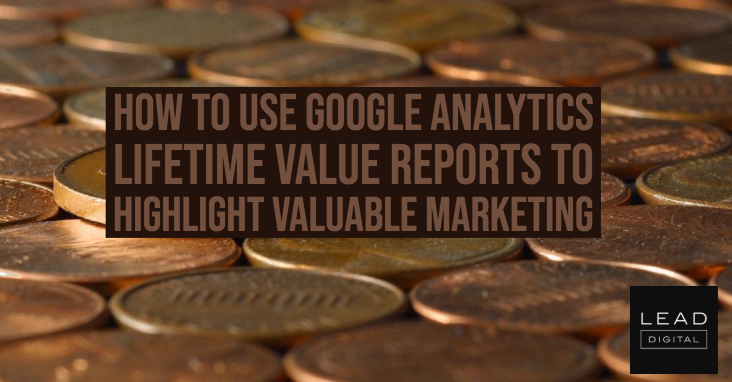 You have a lot of reports to examine, but not sure what should be used for discovering long-term value.
You have a lot of reports to examine, but not sure what should be used for discovering long-term value.
One good report to try is the Lifetime Value Report. Though in beta, the report has existed in Google Analytics since 2017. It has significant value for focusing on what is influencing your customers to engage your app or shop on your website. This can give your marketing budget plans more order when it comes to what is working and what activities to continue.
The Value of Google’s Lifetime Value Reports
Why Customer Lifetime Value is important needs no deep explanation. For the best ROI, you want your marketing focused on the customers who will spend even long after your campaign. The Lifetime Value Report in Google Analytics can help with that.
Google’s version of Customer Lifetime Value analysis is contained in the Lifetime Value report. The report appears on the audience segment, and provides a comparison chart of your acquisition sources by revenue, user and revenue per user.

The main graph of the report shows one of eight Lifetime Value metrics over a maximum 90-day range. The Lifetime Value metrics are selected to cover KPI-quality measurement. They include:
-
Appviews Per User (LTV)
-
Goal Completions Per User (LTV)
-
Pageviews Per User (LTV)
-
Revenue Per User (LTV)
-
Session Duration Per User (LTV)
-
Sessions Per User (LTV)
-
Transactions Per User (LTV)
If you have the main graph set to Sessions Per User (LTV), you have a way to see which campaigns and channels delivered the most number of sessions per user — useful if you are looking for sustained usage for an app or website. Revenue Per User (LTV) indicates which acquisition source yields users with the highest average revenue.
You can also adjust the x axis of the graph from daily to weekly and monthly segments.
Getting the Most Out of the Report
To get the most from the report, I suggest setting the acquisition date range with launch dates for your digital marketing campaigns, app launch, or your real-world event in mind. The date range adjuster appears on the left side of the report, but it has the same adjustability as the standard data range that appears on all the reports in Google Analytics.
Aligning your report dates around those events can highlight if these typical marketing events are an influence in building value. The result is identifying those activities that would be valuable towards your organization over time.
This tactic is similar to one I recommended to clients over the years about examining referral traffic sources, particularly with smaller firms that had limited marketing budgets but had many events in which the firm participated. Many times the clients were unsure if their participation in a trade show or another promotional event was worth repeating the next year. Examining the referral traffic, sometimes by segment, could give a clue if real-world exposure was leading to site visits (or if social media activity was leading to visits). Examining conversions would help rank when sources would potentially benefit from more marketing.
With the lifetime value reports, campaigns are included with referral traffic as acquisition sources, offering a more convenient comparison.
Another step that I recommend to clients is to list the events in the annotation manager so that you can conveniently see the dates alongside the report time. One aspect to note: accessing the annotation usually appears under the main graph in Google Analytics reports, but the Lifetime Value Report does not have that. The report is in beta as I type this, so Google may change this availability later, I hope they do, but in the meantime, you should just be sure to have an appreciation of your event dates against the reporting date to which your data is set. – Read more



